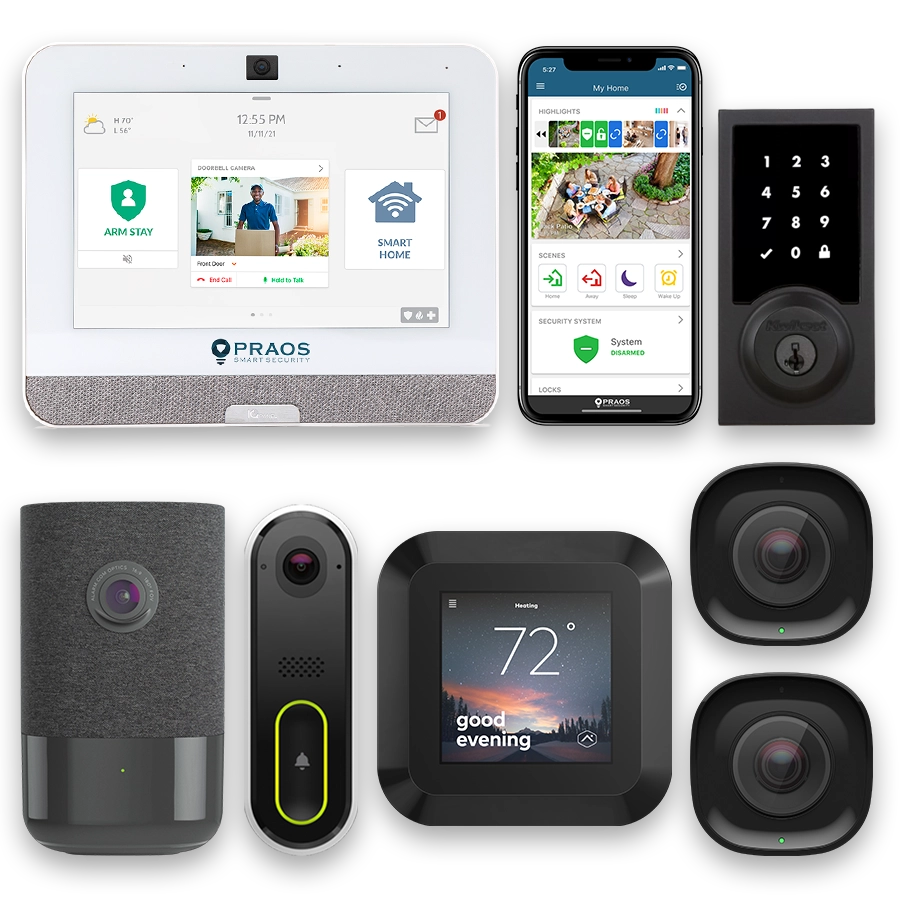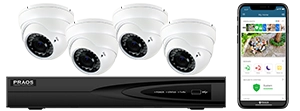- Introduction to Cyber-Physical Security: Historical Context and Current Trends
- Advancements in Intruder Alarm Systems: From Analog to Digital Integration
- Cyber Defense Mechanisms: Techniques and Technologies
- Integration of Intruder Alarms with Cyber Defense: Synergies and Innovations
- Real-World Applications and Case Studies of Cyber-Physical Security Integration
- Future Directions and Emerging Trends in Cyber-Physical Security
Introduction to Cyber-Physical Security: Historical Context and Current Trends
Cyber-physical security represents a significant intersection between the physical world and the digital realm, aiming to protect systems that are susceptible to both physical and cyber threats. This field has evolved in response to the increasing complexity of security challenges faced by modern infrastructure and has a broad application range, including critical infrastructure, industrial control systems, and smart cities.
Historically, security measures were divided into two distinct domains: physical security and cybersecurity. Physical security focused on protecting assets through mechanisms such as locks, fences, and intruder alarms, while cybersecurity dealt with safeguarding information and communication technologies against digital threats. One of the earliest forms of cyber-physical systems (CPS) was the telephone network, integrating electrical engineering and computer science principles.
The rise of the internet and the proliferation of connected devices gave birth to the concept of the Internet of Things (IoT), which significantly blurred the lines between physical and cyber systems. This network of interconnected devices introduced new vulnerabilities as physical devices became accessible and controllable through the internet. According to a report by Gartner, the number of IoT devices is expected to exceed 25 billion by 2025, underscoring the need for robust cyber-physical security measures.
In the current landscape, threats are increasingly sophisticated, with attackers leveraging a combination of physical and cyber techniques to exploit vulnerabilities. Ransomware attacks on industrial control systems, for example, can disrupt critical services like electricity and water supply, causing widespread consequences. The U.S. Department of Homeland Security (DHS) has identified cyber-physical systems as a priority area for national security, given their potential impact on essential services and public safety.
Several frameworks and standards have emerged to guide the development and implementation of cyber-physical security measures. The National Institute of Standards and Technology (NIST) provides a comprehensive Cybersecurity Framework that includes guidelines for managing cybersecurity-related risks to critical infrastructure. The Industrial Internet Consortium (IIC) also offers a security framework specifically designed for industrial IoT systems, emphasizing the importance of integrating security at every layer of the system architecture.
As cyber-physical systems continue to evolve, so do the strategies and technologies used to protect them. Innovations in machine learning, artificial intelligence, and blockchain are being explored to enhance the detection and mitigation of combined physical and cyber threats. Collaboration between industry, government, and academia is essential to stay ahead of emerging threats and ensure the security and resilience of cyber-physical systems.
The evolving nature of threats and the expanding scope of cyber-physical systems necessitate a comprehensive and integrated approach to security. Future advancements will likely focus on greater automation, real-time threat intelligence sharing, and adaptive security measures capable of responding to dynamic and complex threat landscapes.
Advancements in Intruder Alarm Systems: From Analog to Digital Integration
The journey of intruder alarm systems from simple analog mechanisms to sophisticated digital integrations mirrors the overall evolution of home security. As intrusion detection technology advances, it becomes increasingly apt to combat the complexities posed by modern-day security threats. This chapter delves into the advancements in intruder alarm systems, highlighting their transformation and integration with advanced cyber defense mechanisms.
Analog to Digital: The Evolution Process
In the past, intruder alarm systems primarily relied on basic, analog components such as simple electric circuits and magnetic sensors. These systems, while effective for their time, offered limited flexibility and, were prone to false alarms. They required extensive manual intervention for setup and maintenance and lacked the capability to communicate with other security devices or a central monitoring system.
With the advent of digital technology, the landscape of intruder alarms began to change drastically. Modern systems leverage electronic sensors, microprocessors, and wireless communication technologies, providing a more robust and reliable means of detecting unauthorized entries. The shift from analog to digital has facilitated broader integrations and smoother operations.
Technological Integration in Modern Intruder Alarms
Today’s intruder alarm systems incorporate advanced features like motion sensors, glass break detectors, and video surveillance. These systems are further enhanced by integrating Internet of Things (IoT) capabilities, enabling seamless interaction with other smart home devices such as thermostats, lighting, and door locks. This integrated approach not only enhances security but also improves overall home automation and lifestyle convenience.
Praos, a leading local Richmond home security company, exemplifies this innovation. With years of local expertise and an award-winning service track record, Praos harnesses the power of digital integration to offer their customers a comprehensive and fully connected home security experience.
Features of Advanced Intruder Alarm Systems
Advanced intruder alarm systems include several core components that enhance their functionality:
- Real-Time Monitoring: Real-time monitoring capabilities allow for immediate detection and response to potential threats, providing an added layer of security.
- Wireless Connectivity: Eliminating the need for extensive wiring, wireless technology offers flexibility in system installation and scalability.
- Mobile App Integration: Users can control and monitor their alarm systems remotely through a mobile app, ensuring constant oversight regardless of their location.
- Smart Home Integration: Integration with smart home devices creates an interconnected network that improves both security and user convenience.
Praos: Setting the Standard in Home Security
At Praos, the commitment to securing homes goes beyond conventional measures. The company offers a monitored new system plan, providing new customers with free equipment and installation. This approach ensures accessibility to top-notch security solutions tailored to individual needs and budgets.
Praos’s dedication is evident in their efforts to create a truly connected home experience through a single app for security, automation, and surveillance. This integrated solution ensures that no matter where you are, your home remains monitored and protected, giving peace of mind.
The rates for Praos’s services start at a competitive $19.95 per month, making advanced home security accessible to a broader audience. By blending traditional security with innovative technology, Praos continues to lead in the home security domain.
Comparative Overview of Analog and Digital Intruder Alarm Systems
| Feature | Analog Systems | Digital Systems |
|---|---|---|
| Reliability | Manual setup, prone to errors | Automated, high reliability |
| Integration | Limited | Extensive, smart home compatible |
| Monitoring | Local alarms only | Remote, real-time monitoring possible |
| Scalability | Restricted by physical wiring | Highly scalable with wireless technology |
The evolution from analog to digital intruder alarm systems represents a significant leap forward in home security. Companies like Praos are at the forefront of these advancements, offering integrated solutions that combine traditional intruder alarms with cutting-edge digital technologies. This integration not only heightens security but also introduces an era of automation and convenience for homeowners.
Cyber Defense Mechanisms: Techniques and Technologies
Cyber defense mechanisms play a crucial role in safeguarding modern digital systems from various threats. These mechanisms encompass a wide array of techniques and technologies designed to protect infrastructure, data, and critical networks from cyber-attacks.
Intrusion Detection and Prevention Systems (IDPS)
One of the fundamental components of cyber defense is the Intrusion Detection and Prevention Systems (IDPS). These systems monitor network and system activities for malicious activities or policy violations and can automatically take preventive actions. Broadly, IDPS can be classified into:
- Network-based IDPS: Monitors network traffic for suspicious activities and anomalies.
- Host-based IDPS: Focuses on individual hosts or devices, monitoring inbound and outbound packets.
- Signature-based IDPS: Uses a database of known threat signatures to detect malicious activities.
- Anomaly-based IDPS: Identifies deviations from normal behavior to pinpoint potential threats.
Firewalls
Firewalls are essential in controlling incoming and outgoing network traffic based on security rules. They act as a barrier between secure internal networks and untrusted external networks. Modern firewalls are often equipped with Deep Packet Inspection (DPI) and Stateful Inspection capabilities to offer granular control over traffic.
Endpoint Protection
Endpoint protection involves securing end-user devices such as computers, smartphones, and other endpoints. Advanced endpoint protection mechanisms include:
- Antivirus software: Detects and mitigates malware.
- Endpoint Detection and Response (EDR): Provides continuous monitoring and response to advanced threats.
- Application whitelisting: Allows only pre-approved applications to run on a device.
Encryption Technologies
Encryption remains one of the most effective methods to protect sensitive data. It involves converting data into a code to prevent unauthorized access. Modern encryption techniques include:
- Symmetric encryption: Uses a single key for both encryption and decryption.
- Asymmetric encryption: Utilizes a pair of keys (public and private) for secure communications.
- Hash functions: Generate a unique identifier (hash) for data without revealing the original content.
Security Information and Event Management (SIEM)
SIEM systems provide real-time analysis of security alerts generated by various hardware and software resources. They collect and aggregate log data, enabling detailed monitoring and response capabilities. SIEM systems are invaluable for:
- Identifying and mitigating incidents
- Conducting forensic analysis
- Ensuring compliance with regulatory requirements
Zero Trust Architecture
Zero Trust is a security model based on the principle of “never trust, always verify.” It requires strict identity verification for every person and device trying to access resources on a private network, regardless of their location. Key components of Zero Trust include:
- Micro-segmentation: Dividing networks into small, isolated segments to limit lateral movement.
- Multi-Factor Authentication (MFA): Using multiple methods to verify a user’s identity.
- Continuous monitoring and validation: Regularly verifying the security posture of users and devices.
The integration of these cyber defense mechanisms ensures a comprehensive and robust security posture, capable of defending against an increasingly complex and sophisticated threat landscape.
Integration of Intruder Alarms with Cyber Defense: Synergies and Innovations
The integration of intruder alarms with cyber defense mechanisms represents a significant advancement in the field of cyber-physical security. This convergence leverages synergies between physical security systems and digital security protocols, creating a robust defense framework against both physical and cyber threats.
Synergies in Integrated Security Systems
Traditionally, intruder alarm systems have operated independently of cyber defense systems. However, recent technological advancements have facilitated the seamless integration of these two domains. This has enabled organizations to develop comprehensive security strategies that offer enhanced protection.
One of the primary synergies of integrating intruder alarms with cyber defense mechanisms is the ability to create a unified monitoring and response system. This integration allows security teams to correlate physical and digital security events in real-time, leading to faster and more effective incident response. For instance, a physical breach detected by an intruder alarm can now trigger a corresponding cybersecurity alert, prompting immediate investigation and mitigation efforts.
Innovations Driving Integration
Several innovations are making the integration of intruder alarms with cyber defense mechanisms possible:
- IoT Devices: Internet of Things (IoT) devices are at the forefront of this integration. Modern intruder alarms are equipped with IoT sensors that communicate with cybersecurity systems. These sensors can detect unusual activity and send alerts to a central monitoring system, which can then analyze the data for potential cyber threats.
- Advanced Analytics: The use of advanced data analytics and machine learning algorithms enables the analysis of vast amounts of data from integrated systems. These technologies can identify patterns and anomalies that may indicate a combined physical and cyber threat, allowing for proactive prevention measures.
- Unified Threat Management (UTM): UTM solutions are designed to provide a holistic approach to security by combining multiple security features into a single platform. These solutions often include both physical security components, such as intruder alarms, and cybersecurity elements, like firewalls and intrusion detection systems.
- Cloud Integration: Cloud-based security platforms offer scalable and flexible solutions for integrating intruder alarms with cyber defense mechanisms. Cloud systems can aggregate data from various sources, providing a centralized point of management and analysis for security teams.
Enhanced Situational Awareness
By integrating intruder alarms and cyber defense systems, organizations can achieve enhanced situational awareness. This is critical for understanding the full scope of potential threats and coordinating an effective response. With integrated systems, security teams can access a comprehensive view of their security posture, monitoring both physical and digital environments simultaneously.
Furthermore, this holistic view aids in compliance with regulatory requirements. Many industries, such as healthcare and finance, are subject to stringent security regulations that mandate the protection of both physical and digital assets. Integrated security systems can help organizations meet these requirements by providing detailed audit logs and incident reports.
Challenges and Considerations
While the integration of intruder alarms with cyber defense mechanisms offers numerous benefits, it also presents several challenges. Organizations must consider the compatibility of existing systems, the complexity of managing integrated solutions, and the potential for increased costs. Additionally, ensuring that data from different sources is accurately correlated and acted upon requires sophisticated algorithms and robust infrastructure.
To address these challenges, organizations should adopt a phased approach to integration, starting with pilot projects and gradually scaling up as they gain experience and confidence in the technology. Collaboration with trusted security vendors and continuous training for security personnel are also crucial to the successful implementation of integrated security systems.
In conclusion, the integration of intruder alarms with advanced cyber defense mechanisms represents a significant step forward in enhancing overall security. By leveraging the synergies between physical and digital security technologies, organizations can protect against a wider array of threats and respond more effectively to incidents. Continued innovation and strategic planning will be key to overcoming the challenges and maximizing the benefits of this integrated approach.
Real-World Applications and Case Studies of Cyber-Physical Security Integration
The integration of intruder alarms with advanced cyber defense mechanisms has found numerous real-world applications across different sectors. Organizations have proactively implemented these systems to safeguard both physical and digital assets.
In the banking sector, for instance, many institutions have incorporated cyber-physical security systems to protect against unauthorized access and data breaches. By combining traditional intruder alarms with sophisticated cyber defense technologies such as intrusion detection systems (IDS) and firewalls, banks can detect and mitigate threats in real time.
Critical infrastructure, including power plants and water treatment facilities, has also benefited from these integrated systems. The deployment of coordinated security solutions helps these facilities to monitor and respond to potential threats that could compromise operational efficiency or public safety. For example, the integration of ICS/SCADA security solutions with physical surveillance and alarms has proven effective in enhancing both physical security and cybersecurity.
Another prominent example is smart cities, where sensors and alarms are integrated with citywide cyber defense mechanisms to ensure the safety and security of residents. These smart systems enable municipal authorities to identify and respond to threats, from cyber-attacks on public services to physical intrusions at critical sites, enabling a more resilient urban environment.
Healthcare facilities have begun to adopt integrated security systems to safeguard patient data and ensure hospital safety. Advanced cyber defenses protect electronic health records (EHRs), while physical alarms secure premises and critical equipment. This dual-layered approach mitigates risks such as data breaches and physical theft, ensuring comprehensive security.
Additionally, the retail sector has increasingly implemented these integrated security systems to address both digital and physical threats. Retailers use a combination of video surveillance, intruder alarms, and cybersecurity tools like network monitoring to protect against theft and cyber-attacks. This protects inventory and customer information alike.
The transportation industry also leverages integrated cyber-physical security systems for improved safety and efficiency. Airports, for example, employ a mix of physical security alarms and cyber defense systems such as endpoint protection to secure passenger data and prevent disruptions to transportation operations caused by cyber threats.
Overall, these real-world applications demonstrate the effectiveness and necessity of combining intruder alarm systems with advanced cyber defense mechanisms. By integrating these technologies, organizations strengthen their security posture to address a broader spectrum of threats, ensuring both physical safety and cybersecurity.
Future Directions and Emerging Trends in Cyber-Physical Security
As technology rapidly advances, the field of cyber-physical security must evolve to keep pace with new threats and opportunities. Emerging trends and future directions in this domain are influenced by the continuous development of both cyber defense technologies and physical security systems. The integration of these systems is set to become increasingly sophisticated, driven by improvements in artificial intelligence, machine learning, and the Internet of Things (IoT).
Artificial Intelligence and Machine Learning play a crucial role in enhancing cyber-physical security. These technologies enable systems to better detect and respond to threats by analyzing vast amounts of data and recognizing patterns that may indicate malicious activity. AI and machine learning can be used to:
- Optimize the performance of integrated security systems
- Identify and mitigate threats in real-time
- Predict and prevent potential security breaches
These capabilities can significantly reduce response times and improve the overall effectiveness of security measures.
The Internet of Things (IoT) is another key driver in the future of cyber-physical security. IoT devices, embedded with sensors and connectivity, enable seamless communication between physical and cyber systems. This connectivity provides comprehensive security coverage, allowing for:
- Enhanced monitoring through interconnected devices
- Automated and coordinated responses to security incidents
- Real-time data sharing and analysis
However, the widespread use of IoT devices also presents new vulnerabilities that must be addressed, such as ensuring device security and data privacy.
Table 1 illustrates the primary benefits and challenges associated with the integration of AI, machine learning, and IoT in cyber-physical security:
| Technology | Benefits | Challenges |
|---|---|---|
| Artificial Intelligence | Real-time threat detection; Enhanced pattern recognition | Complexity of implementation; Potential for adversarial attacks |
| Machine Learning | Automated threat prediction; Continuous learning and improvement | Data privacy concerns; Requirement of large datasets |
| Internet of Things | Enhanced connectivity; Comprehensive monitoring | Device security vulnerabilities; Data management challenges |
Emerging technologies such as blockchain are also being explored for their potential applications in cyber-physical security. Blockchain’s decentralized and immutable ledger system can enhance security by ensuring the integrity of data. For example, blockchain can be used to:
- Securely store and share security logs
- Verify the authenticity of devices and data
- Enable transparent and tamper-proof auditing
While blockchain offers promising benefits, it also requires substantial computational resources and faces scalability issues.
Finally, ongoing research and international cooperation are essential for staying ahead of emerging threats. Collaborative efforts between governments, industries, and academic institutions can drive innovation and the development of standardized protocols and best practices in cyber-physical security.
In conclusion, the future of cyber-physical security lies in the integration of advanced technologies, continuous adaptation to new threats, and collaborative efforts across various sectors. By leveraging AI, machine learning, IoT, and blockchain, and addressing their associated challenges, the security landscape can evolve to provide robust protection against increasingly sophisticated cyber and physical threats.





